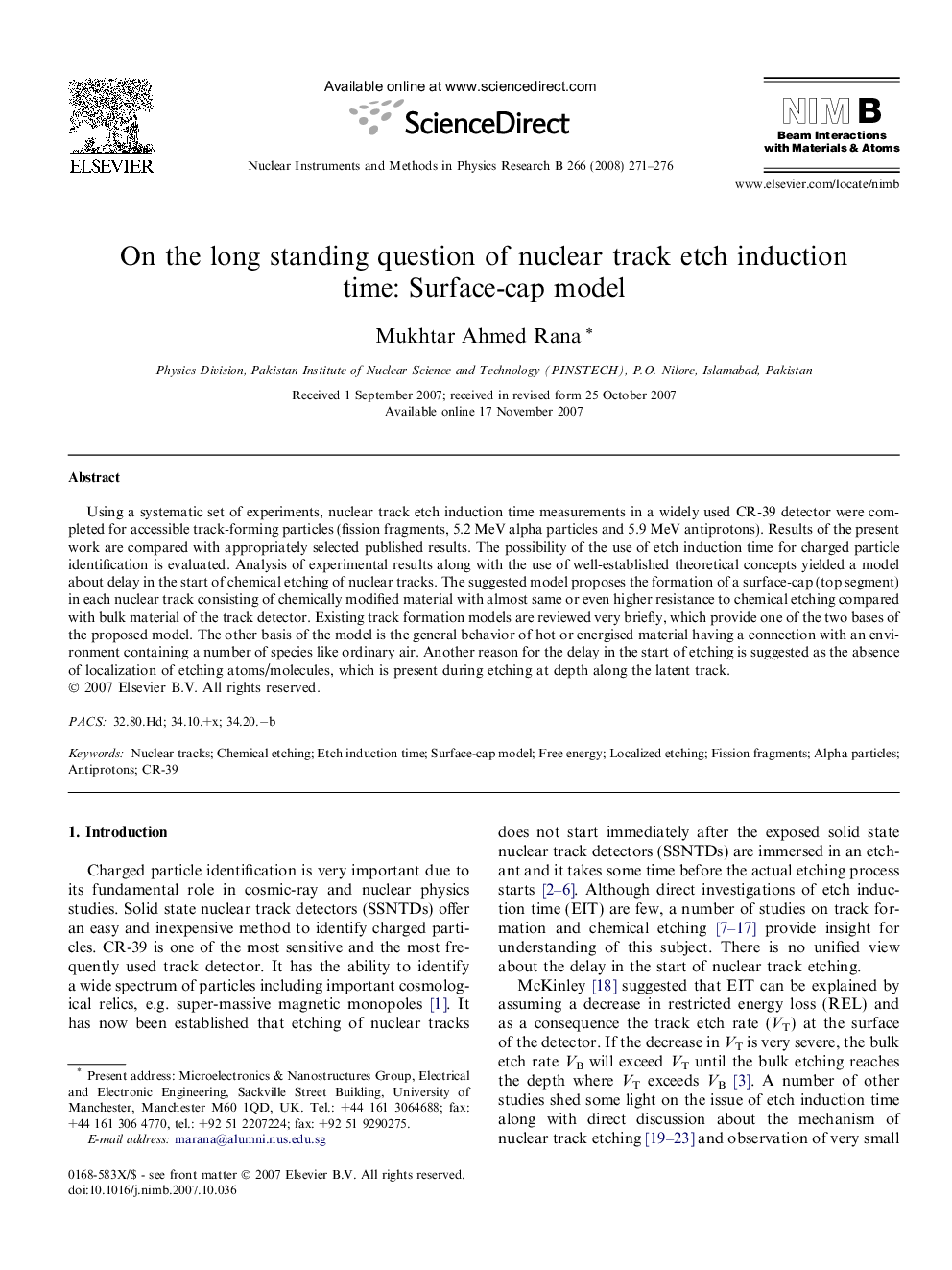| Article ID | Journal | Published Year | Pages | File Type |
|---|---|---|---|---|
| 1685401 | Nuclear Instruments and Methods in Physics Research Section B: Beam Interactions with Materials and Atoms | 2008 | 6 Pages |
Abstract
Using a systematic set of experiments, nuclear track etch induction time measurements in a widely used CR-39 detector were completed for accessible track-forming particles (fission fragments, 5.2Â MeV alpha particles and 5.9Â MeV antiprotons). Results of the present work are compared with appropriately selected published results. The possibility of the use of etch induction time for charged particle identification is evaluated. Analysis of experimental results along with the use of well-established theoretical concepts yielded a model about delay in the start of chemical etching of nuclear tracks. The suggested model proposes the formation of a surface-cap (top segment) in each nuclear track consisting of chemically modified material with almost same or even higher resistance to chemical etching compared with bulk material of the track detector. Existing track formation models are reviewed very briefly, which provide one of the two bases of the proposed model. The other basis of the model is the general behavior of hot or energised material having a connection with an environment containing a number of species like ordinary air. Another reason for the delay in the start of etching is suggested as the absence of localization of etching atoms/molecules, which is present during etching at depth along the latent track.
Keywords
Related Topics
Physical Sciences and Engineering
Materials Science
Surfaces, Coatings and Films
Authors
Mukhtar Ahmed Rana,
